
 C.E. Lawrence was born in Nurnberg, Germany to American parents. She says her early childhood experience left her with a taste for Goethe and sausages. Shortly after moving to New York she joined the legendary improvisational company First Amendment and toured Chicago City Limits before joining the New York cast. She has written award-winning plays and musicals which have been produced around the world.
C.E. Lawrence was born in Nurnberg, Germany to American parents. She says her early childhood experience left her with a taste for Goethe and sausages. Shortly after moving to New York she joined the legendary improvisational company First Amendment and toured Chicago City Limits before joining the New York cast. She has written award-winning plays and musicals which have been produced around the world.
She has eight published novels, six novellas and a dozen or so short stories and poems.
‘Silent Victim’ is her latest thriller and her novel ‘Silent Kills’ is due out later this year.
She met me at The Slaughterhouse where we talked about German literature and surveillance.
What influence has German literature had on your writing?
I double majored in German at school so I read a lot of German authors and playwrights, some in English and some in German. Though influences are hard to gauge, as they may be subtle, there’s no doubt that Durrenmatt’s amazing crime novel The Judge and His Hangman stayed with me. I was so struck by his use of a detective who was dying of cancer – it was a striking, memorable book. Maybe that was in the back of my mind when I gave my detective Lee Campbell the affliction of major clinical depression, also a debilitating disease. (Durrenmatt was Swiss, but he wrote in German, so he was part of our curriculum.)
In school I read the deeply romantic writers I think of as the German heroic poets – Goethe, Schiller, Heine. I think that sense of romantic heroism and love of nature is part of my psyche, which may explain my attraction to some German writers (as well my weakness for sneaking into the music room late at night to play Schubert Lieder with my cousin.)
I just adore Thomas Mann, especially Buddenbrooks, which is one of the great novels of Western literature, surely. And Vicki Baum’s classic The Grand Hotel as well – another favorite. I love the late 19th century, early 20th century decadence that both Mann and Baum manage to capture, as the grant Reich era of barons and princes declines and morphs into the horror of authoritarian facism. Both Mann and Baum have a keen eye for the little man crushed under the heel of society’s relentless pressures.
And I also love the prewar and postwar dry wit and irony of Bertolt Brecht, Heinrich Boll, and the murky mysticism of Herman Hesse. Brecht’s unforgiving socialism and sense of social justice, Boll’s iron wit and unflinching observation of postwar excesses – these all feel essential and part of my inner template, if that’s not too vague. I even studied the German mystic Jacob Boehme, who made a rather deep impression on me.
So maybe it’s that “staying power” as much as any one thing that creates the bond I feel with writers I’ve read. I have this romantic notion that all the things we’ve read and seen and heard, and all the people we’ve met, become part of us somehow, so that by the end of our lives we’re not just one individual, but a walking repository of ideas, feelings, stories, and souls. I know it’s rather far-fetched and mystical, but then, I too have German blood.
Durrenmatt in his play ‘Die Panne’, which means the breakdown, portrays a character called Traps being manipulated by a menacing game concerning guilt and culpability. He is forced to confront himself. Crime fiction contans much guilt thematically be it in legal terms or psychological ones. How effective do you think Durrenmatt’s play is and to what extent do you think it relates to crime fiction?
Omg, I listened to the radio version of that play in college, in German! It ROCKED. I remember it so well, even now. He creates this amazing feeling of menace – as he does in his most famous play, Der Besuch der alten Dame (usually translated as The Visit.)
In both plays, there’s a trap and there’s guilt on the part of the person or persons being trapped. No one is entirely innocent, and no one’s motives are pure. I think there’s great relevance for the crime writer, dealing as we do with the darker side of human nature.
And Durrenmatt was, after all, dealing with one of the greatest crimes humans had perpetrated against each other in all of our dark history: the Holocaust and the rise of the Nazi war machine. It’s ironic, because being Swiss, he was theoretically “neutral,” but in his writing he’s anything but. The notion of guilt and the devil’s bargain is a theme throughout his work – as it was for so many postwar writers in Europe.
I think the best crime writers delve into the darkness within us all, so that it’s not only the criminals who are tarnished. In The Judge and His Hangman, for example, you could even see Commissar Bärlach’s cancer as a metaphor for something “eating him from within.” If you read postwar German writers, you get the feeling of universal guilt, though some of them (Heinrich Boll, for example) lighten their prose with irony and wit.
Do you think Dostoyevsky wrote the first great whydunnit it in ‘Crime And Punishment’?
Ah, Fyodor! I love the Russians because they’re so soulful. I think what Dostoevski did in Crime and Punishment is monumental. How to express it? I’ll try.
Like all great works of art, Crime and Punishment works on many levels. It is a portrayal of a tormented, unwell mind – Raskolnikov’s seizures indicate he may indeed have a brain disorder of some kind. And in many ways he’s a prototype of a romantic Bohemian soul gone bad. As a psychological portrayal of a man (as we would say today) “acting out” his aggression toward his own controlling, manipulative mother, it is unparalleled. He kills the pawn broker (so he thinks) to rid society of her evil presence, but of course he is killing his own mother by proxy.
Wow! Without knowing how conscious Dostoevski was of his own brilliant insights, I can only say that he manages to make the book a novel of ideas as well as intrigue. Raskolnikov’s confused notions of being a “superior being” later turn into remorse and guilt, and the sly detective Porfiry Petrovich plays mind games with the confused young man until he confesses. He’s somewhat reminscient of Hugo’s brilliant Inspector Javert in Les Miserables, except that, unlike Jean Valjean, Raskolnikov really is a criminal.
The saintly Sonya reminds me of similar characters in Chekhov and Tolstoy – the quiet, self-sacrificing young girl who represent total goodness – and her influence also leads to the confession. As a study of the inner workings of a very flawed but sympathetic criminal, Crime and Punishment is masterful.
Unfortunately, many criminals in real life do not experience the guilt and torment of a Raskolnikov – police files are full of cases of men and women who murdered their whole family and would have been perfectly happy to get away with it, if they could. And I think most crime fiction these days is not as concerned with portrayal of the offender’s inner life as it is in showing how he/she is captured.
But Crime and Punishment stands alone – as a portrayal of the less romantic aspects of the Bohemian life in mid-century Russia, it is fascinating, and as a crime novel, it is unparalleled.
My learned mother reminded me
The only thing you omit is the religious fervor, which, of course, is the essence of Sonya, and the salvation of Roskolnikov. It is such an integral part of the Russian during this period that you must not ignore it, and it only adds to the brilliance of his novel.
Do you think as surveillance has become more prevalent in Western society crime has changed?
I think that all of the advances in forensics have led to more cunning, savvy criminals. For example, take the serial killer at large in Long Island right now. He has used disposable cell phones to call the families of his victims, stayed on the phone less than three minutes (making the calls harder to trace), and called from crowded locations such as Times Square, which also makes the calls hard to pinpoint.
So right there we have a present day example of someone who understands that no matter how sophisticated crime solving gets, there is always a chance you can stay one step ahead of the law.
Serial rapists often have victims bathe to get rid of DNA, wear latex gloves to avoid leaving fingerprints, and employ other methods to avoid leaving DNA evidence – even going so far as wearing hair nets and paper booties, in one case I saw recently.
Unfortunately, the more organized the offender, the more likely it is they will employ these kinds of techniques to avoid capture. But the flip side is that psychopaths suffer from arrogance, which often leads to their capture. I just saw a story on 48 Hours about a highly decorated air force colonel who didn’t bother to erase his tire tracks or boot impressions from his victim’s property. He didn’t even throw out his boots, so they had a mountain of forensic evidence against him. His fatal flaw in getting caught was his arrogance – he thought he was above suspicion, apparently. Sadly, he was able to rape two women and rape and murder two others before the law caught up with him.
I think the X-files mantra is a good one for law enforcement to follow in cases like those: Trust No One.
Do you think paranoia is at the root of much mental illness and many crimes?
What I think is that the emotion of fear (of which paranoia is an extreme and pathological variation) is behind a lot of aggressive behavior, both among humans and other members of the animal kingdom. The term can be taken as a diagnosis or a description, depending on the context. Certain when combined with the condition of schizophrenia or other character disorders, it can be deadly for the sufferer and his/her victims. In any context, it is fear run amok – and the result can well be a crime of some kind, or self-injury, in some cases.
However, it’s worth noting that psychopaths and sociopaths experience less of a biological fear response than normal people. Confronted with danger, they tend not to exhibit the symptoms of fear – elevated heart rate, rapid breathing, increased adrenaline. Instead, they exhibit an eerie calm; they seem to have a biologically lower threshold for panic and fear than other people. Criminal psychologists have theorized that this is one of the mechanisms that allows them to commit their crimes – and that it even may play a part in their behavior. Unable to have “normal” responses to events, their craving for stimulation may lead them to indulge in acts that the rest of us would find unthinkable.
Strictly speaking, sociopaths suffer from mental illness – the most severe kind, actually – but legally they are rarely, if ever, insane. Bernie Madoff, for example, a classic sociopath, knew exactly what he was doing every step of the way. It’s possible that he felt only truly alive when he was bilking other people out of millions – that his real kicks in life came from the potential of being discovered. But, like most sociopaths, he also was extraordinarily arrogant, and felt he was smarter than everyone else. In the end, he was wrong – but sadly, not before the damage was done.
Tell us about ‘Silent Kills’.
Ah, good one. I’m tempted to give you the jacket-blurb style summary of the book. But I think it would be more fun to give a brief account of the genesis of it. Last summer in my cabin in Woodstock my friend Tony Moore and I were listening to Pandora and Last FM online, and he found some Steampunk bands. I really liked some of the music, and started doing research into what Steampunk was all about – the aesthetics, the costumes, the literary origins, etc. It was all great fun – sort of Goth meets Jules Verne meets Terry Gilliam. I really like the blend of science, adventure and Gothic horror. And I started listening to bands like Abney Park and Clockwork Quartet. I’ve always been attracted to Victoriana and elements of Gothic horror (my theatre production company is Gothic Productions.) And some of my favorite writers are the guys I call the American Gothics – Hawthorne, Poe and Melville. (I’ve actually written a musical adaptation of House of the Seven Gables.)
Then, when I was thinking about the next Lee Campbell thriller, it occurred to me that a Steampunk killer might be an interesting hook. So I created a serial murderer who was into the more Gothic aspects of Steampunk. Specifically, he drains the blood from his victims (you’ll have to read the book to find out why.) I gave him a backstory that makes this somewhat logical, and also tied him into the great horror writing or Poe, Hawthorne and Melville (I know Melville isn’t thought of as a horror writer, but Bartleby? Come on! That’s horror at its purest, imho.)
So I have scenes at Woodlawn Cemetary, in Steampunk clubs, and a chase scene in a graveyard in Troy, New York. And my climactic scene is in a crematorium. If that isn’t the ultimate in Goth horror, I don’t know what is! But you’ll have to read the book to find out who the killer is, and why he does what he does.
Do you think control of the body be it from the pathological perspective of an individual over their own body or the state over a citizen is allied to the motivations a killer has in seeking to control the body of the victim be it by murder or cannibalism?
Interesting question – certainly control in all its aspects is part of the psychological makeup of many (if not most) criminals. Domination, power and control are the ugly triad of the serial killer. My research into the subject shows that their obsession with control stems not so much from their political situation as from their childhood home environment.
I have yet to read of a serial offender, for example, who did not have some form of chronic abuse as a child which removed all sense of control from his life at the time. The traditional interpretation is that these people can go on to inflict the helplessness they felt as a child on their victims. Robert Ressler and others have done pioneering studies on the lives of these (mostly) men, and what drives them to kill over and over. The enforced helplessness they felt as children then becomes part of their pathology, and they replay their childhood trauma, playing the part of their abusers, in a way, with their victims as stand-ins for themselves.
I say “in a way” because it’s often not an exact match to the childhood experience. What is a match, though, is the emotional experience of terror, helplessness and victimization. With serial offenders it’s just a more extreme version of the old saw that “the abused becomes the abuser.”
With cannibalism, as in the case of Jeffrey Dahmer, for example, it’s even more complicated. Dahmer readily admits he killed and consumed his victims because he didn’t want them to abandon him. So he turned his fears of abandonment into a frightening metaphor – by consuming his victims, he “kept” them forever. Creepy, but it makes grim sense in a literary way.
Do you think the same criteria can be applied to a different individual and they would not become a killer and if so why?
There’s a real mystery at the bottom of why some people with terribly abusive childhoods become criminals and some don’t. Some studies indicate that as long as there’s one person in the child’s life who functions as a true caregiver, or who gives them unconditional love at some early stage, the child may turn out all right. This person doesn’t have to be a parent or relative; just so long as it’s someone who loves and respects the child.
Some people feel genetics plays a role; my personal opinion is that it plays less of a role than nurture, and that the “bad seed” theory is just a myth. Given the right environment, I believe any child can thrive.
What made you write crime fiction?
But the answer to this one is that when I first started writing mysteries, I had been a Conan Doyle fan since I was a teen. So when editor Marvin Kaye asked me to write a story on commission for his Holmes anthology, The Game Is Afoot, I jumped at the chance. Since it was only my second published story, I was delighted when Kirkus singled out my story “The Strange Case of the Tongue-Tied Tenor” as “a particular standout.” I guess that gave me the courage to think I could write mysteries.
So when Keith Kahla, the St. Martins editor of that anthology approached me and said he’d probably buy a Holmes novel if I wrote it, my only response was “Define ‘probably.'” When he said 70-80% likely, I wrote The Star of India (which has just been repurchased by Titan Press in England for world rights reprint.)
So that’s how my career in crime started. I also wanted to write something that would sell, and to my mind good writing is irrespective of genre. Soon after I was signed on bu Berkley for an original mystery series, Who Killed Blance Dubois? and its sequels.
Then I got very interested in criminal psychology and forensics, and after a couple of years to study, started writing thrillers under the C.E. Lawrence pen name. I took a class in criminal psychology at John Jay College from Dr. Lewis Schlesinger, a great teacher and profiler, and I continue to collect all kinds of books on crime and crime solving. I’ve even made friends with a wonderful former FBI profiler, Gregg McCrary, who is a terrific person as well as a highly respected expert in his field. He took time out to advise me on my first thriller, Silent Screams.
Though I admire crime writers, my real heroes are the men and women who catch the bad guys. As I told Gregg, I only write about what they actually go out and do every day.
What are you working on right now?
I’m currently writing the fourth thriller in my Lee Campbell series, Silent Slaughter. The serial killer he’s chasing this time is a nasty piece of work, a man so embittered and scarred by life (literally and metaphorically) that he has become a dark, twisted creature. Up until now I’ve given my killers a touch of sympathy, but Jack is the worst kind of lust killer – a sexual sadist. And he’s smart – he’s a math professor at an Ivy League school. I’m a bit rattled about it, actually, because these guys are very scary in real life, and I’m apprehensive about spending much time in his head. But I’m looking forward to creating an interesting puzzle in the solution of the crimes; as a mathematician, Jack will be dropping clues in the form of mathematical codes that Lee and his team will have to figure out. I hope to make it an intriguing puzzle as well as a dark journey.
Thank you Carole for an insightful and memorable interview.
Find everything C.E. Lawrence here.


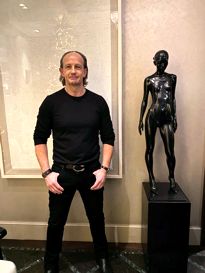
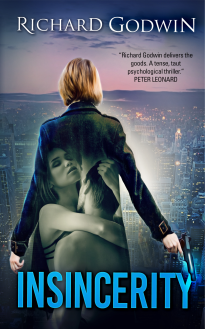
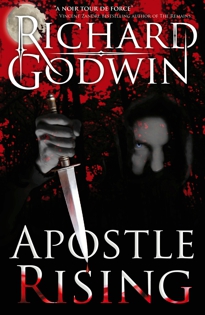
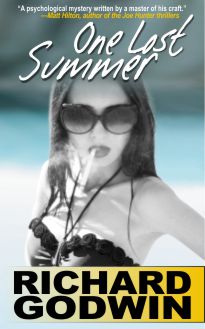
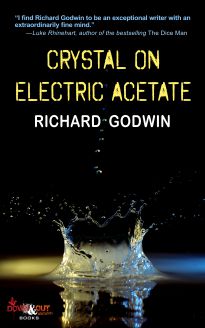
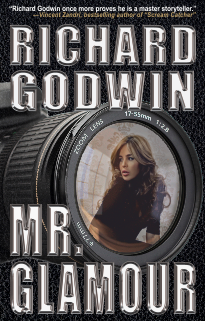
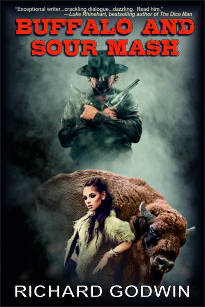
21 Responses to Chin Wag At The Slaughterhouse: Interview With C.E. Lawrence